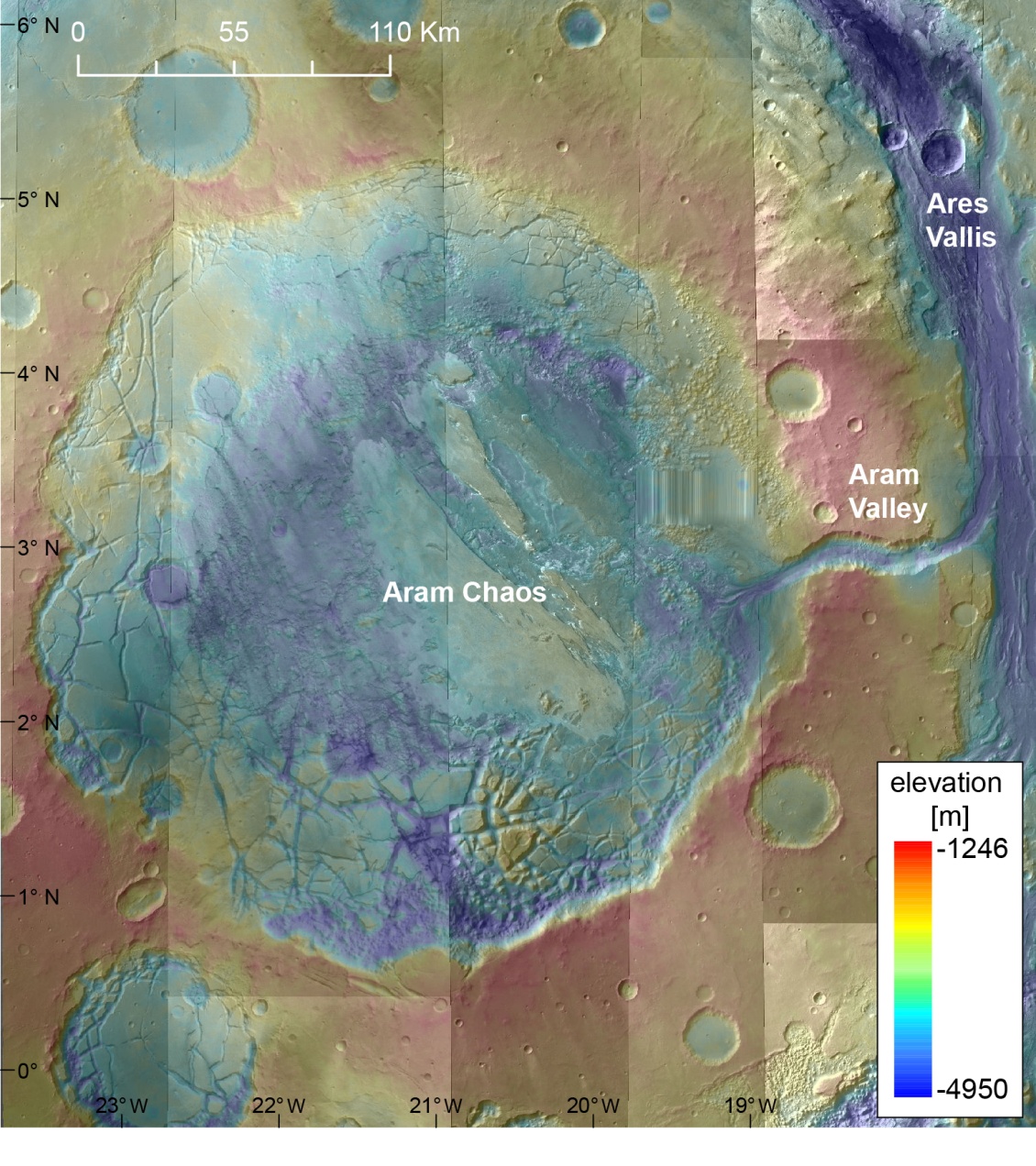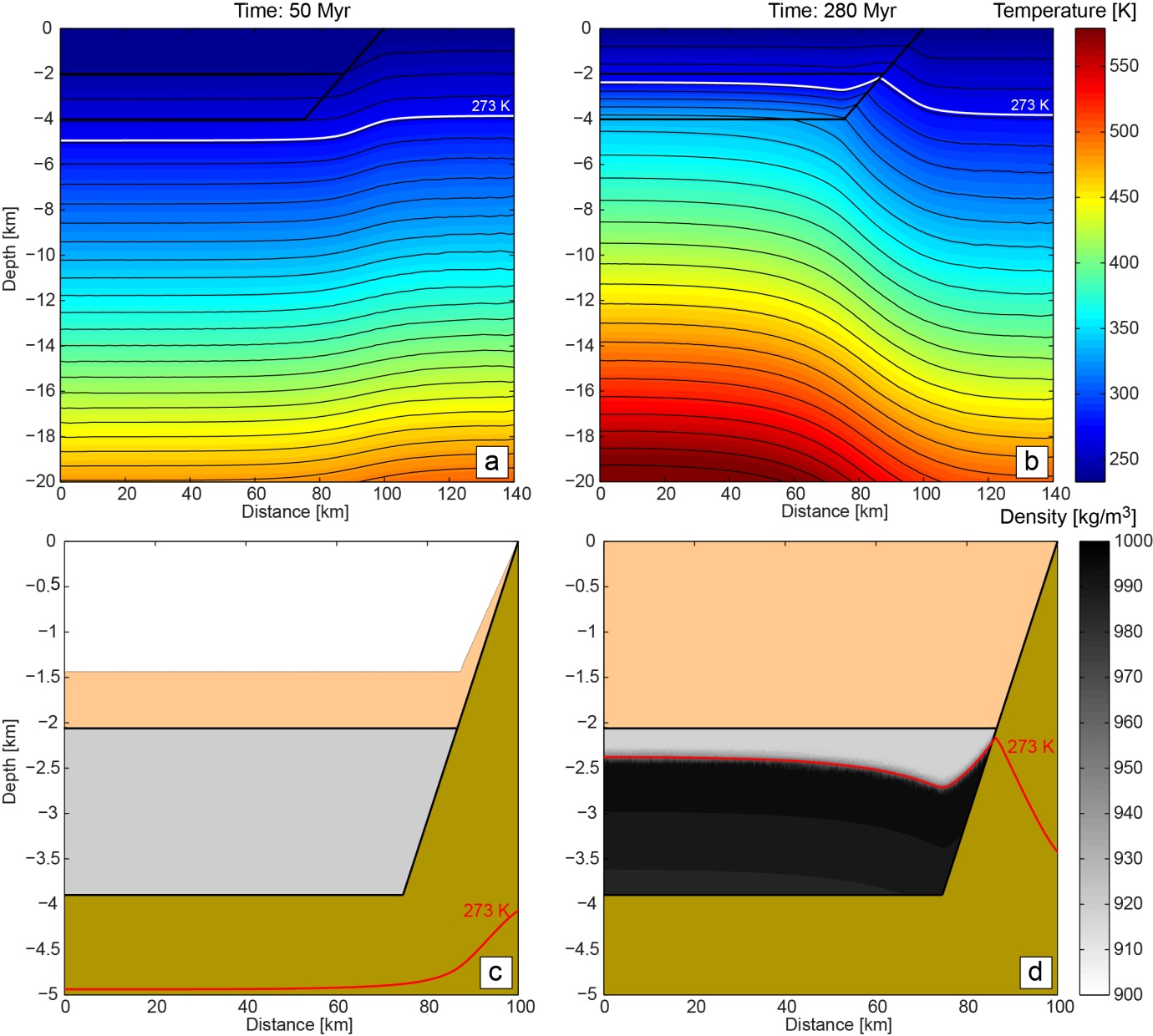A recent paper, which combines observations from satellite photos of the 280 kilometere wide and four kilometer deep crater plus models of the ice melting process and resulting catastrophic outflow, says that Aram Chaos, the lumpy, bumpy floor of an ancient impact crater on Mars, formed as a result of catastrophic melting and outflow of a buried ice lake.
Manuel Roda presented the results, done with Tanja E. Zegers, Maarten G. Kleinhans and Rob Govers from Utrecht University and Jelmer H.P. Oosthoek of Jacobs University Bremen, at the European Planetary Science Congress (EPSC) at University College London the second week of September.

View of Aram Chaos with elevation map. Aram Chaos is an impact crateron Mars. It is connected to Ares Vallis by a 10 km wide and 2 km deep outflow channel.
"About 3.5 billion years ago, the pristine Aram impact crater was partly filled with water ice that was buried under a two-kilometre thick layer of sediment. This layer isolated the ice from surface temperatures, but it gradually melted over a period of millions of years due to the heat released by the planet. The sediment overlying fluid water became unstable and collapsed," said Roda.

Prospective view of Aram Valley inlet The Aram Valley is a deep (2 km) V-shaped valley which connects Aram Chaos to the Ares Vallis. Credit: http://google.com/mars (Vertical exaggeration 3)
The resulting massive expulsion of a hundred thousand cubic kilometres of liquid water was four times the volume of Lake Baikal, the largest freshwater lake on Earth. The water carved a valley of 10 kilometres wide and 2 kilometres deep in about one month and a chaotic pattern of blocks was left in the Aram crater.

Melting process Numerical modelling shows how the internal heat of the planet diffuses up into the crater with the ice layer. The 273K line indicates the melting point. After roughly 280 million years the sediment layer on the ice has become so thick that the water melts. The layer of rock on top of fluid water is unstable and would have broken up in reality.
"An exciting consequence is that rock-ice units are possibly still present in the subsurface. These never achieved the melting conditions, or melted only a lower thin layer, insufficient to result in a full collapse event. Buried ice lakes testify of Mars rapidly turning into a cold, frozen planet, but with lakes buried in the subsurface. These lakes could provide a potentially favorable site for life, shielded from hazardous UV radiation at the surface," said Roda.






Comments